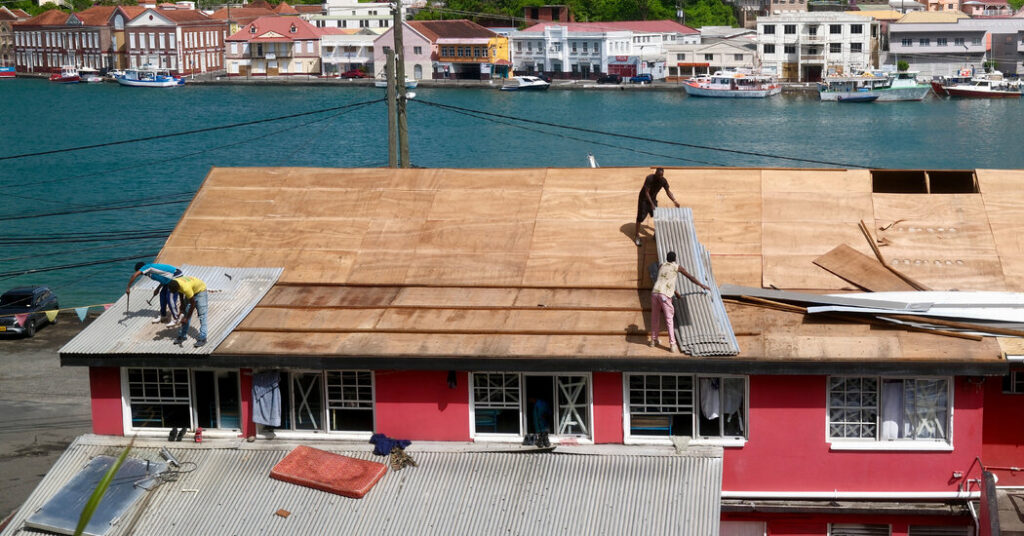Mr Mitchell said many people on the main island of Grenada had lost their homes, but the damage was worse on Carriacou and Petite Martinique. Officials are still trying to assess the extent of damage to both islands, particularly to power grids and water supplies.
Like other Caribbean countries, Grenada gets most of its drinking water from rainwater collection, including gutters on roofs that lead to storage containers. Terrence Smith, director of the country’s water agency, said damage from the storm was not expected to immediately lead to life-threatening water shortages in Carriacou and Petite Martinique.
“We think that’s unlikely,” Smith said Tuesday. “If it’s true that most houses have lost their roofs, then they can no longer collect rainwater. But many of these homes have weeks of storage space.
However, the recent drought has left many homes on the islands relying on desalination plants for water, and Smith said the plants in Carriacou and Petite Martinique “could be negatively impacted by the hurricane.” The system was already under stress before the hurricane arrived.
Beryl set records as the first Category 4 hurricane and the first Category 5 storm to form in the Atlantic early this season. A recent study found that as ocean temperatures rise, hurricanes in the Atlantic are more likely to grow from weak storms to major Category 3 or higher storms in just 24 hours.
Mr Mitchell said beryl was a direct result of global warming and said Grenada and similar countries were on the frontline of the climate crisis. “We are no longer prepared to accept that we continue to suffer significant, visible losses and damage from climate events and expect to rebuild year after year, while the countries that caused and exacerbated it are accepted.
Jovan Johnston contributed reporting from Kingston, Jamaica, and Daphne Ewing-Chow from Grand Cayman, Cayman Islands.

